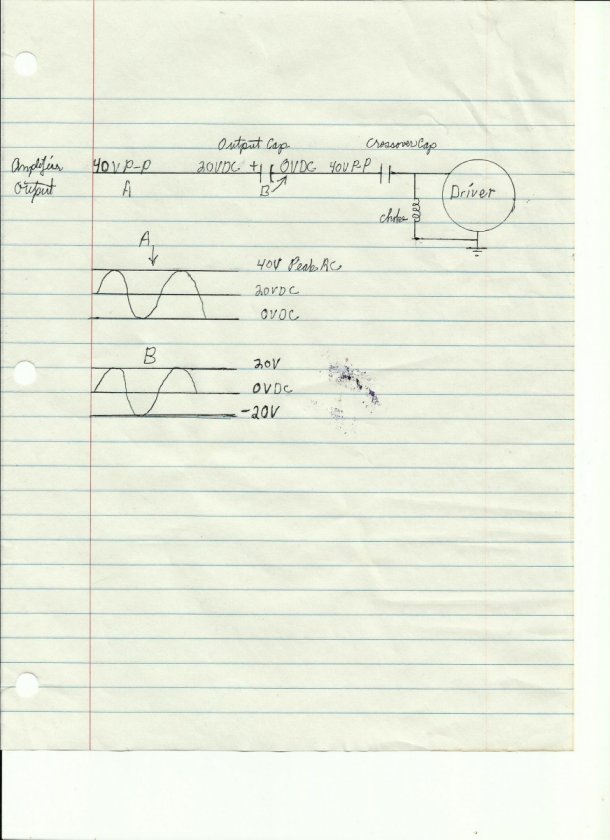I'll put myself in this category, but...
Most, if not all, single supply amplifiers place a high value polarized capacitor just before the speaker terminal. This cap is in series with the crossover and couples the entire current between the amp and the speaker. Why don't these caps explode?
Mike
Correct Mboxler, there is a DC component at that type of amplifier's outputs that must be blocked from the
speaker terminals, and speaker. So one places a capacitor to block the DC voltage but allow the AC musical signal to pass through the crossover capacitor.
As a single DC supply amplifier, we need to first realize that the DC voltage can never go below zero volts with reference
to ground, thus the DC blocking capacitor is never reversed "biased" to below zero volts/negative volts.
Here is a schematic that I hope will help.

Point A, is the output musical signal (40 volts peak to peak, maximum output) and 20 volts DC. The AC musical signal "modulates" the DC voltage. The AC voltage varies with the 20 volts as the reference. As such, the voltage never goes below zero volts as the amplifier will start clipping. Peak voltage is plus 40 volts.
After we block the DC voltage, we have graph B. Notice there is no DC voltage at the right/crossover capacitor. The
reference for the AC musical signal is now zero volts. The AC voltage can now swing in to the negative region, to -20 volts.
This negative voltage will destroy our polar crossover capacitor. In fact, in the negative voltage region, the polar crossover capacitor will resemble a small resistor, passing all the frequencies, not just the highs. This will probably destroy our
tweeter as well.
Hope this helps.
steve